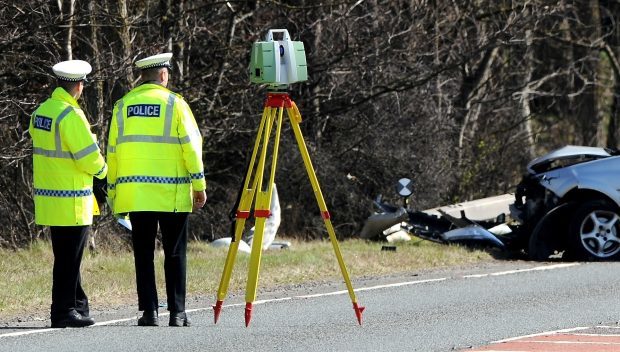The work of a collision investigator is changing rapidly through the increasing adoption of new technology.
One significant development is the use of laser scanners, which can be deployed to map a crash scene down to very minute detail.
In the past, officers utilised traditional tools such as theodolites to manually survey a crash scene.
They had the capacity to take up to 400 points of measurement – but, with the robotic technology available to officers, this now measures into the millions.
One benefit is that it can be carried out more quickly than by using traditional techniques.
Investigators take scans from a number of locations and then piece them together into one recreation of the scene.
Constable Lewis MacDonald said: “From that, what we can produce is a 3D representation, almost like a walk-through where we can zoom into certain points, view it from above or below and fully rotate around it.
“If you have a building, you can go to a window and see what the view from that window would be, all from that data.”
Another new tool being deployed by investigators is diagnostic equipment to take information directly from vehicles which are involved in collisions.
Con MacDonald added: “It’s relatively new, but will possibly become more influential in the future: the facility to interrogate cars themselves via their onboard diagnostic port.
“It’s new technology that we are beginning to take on board.”
